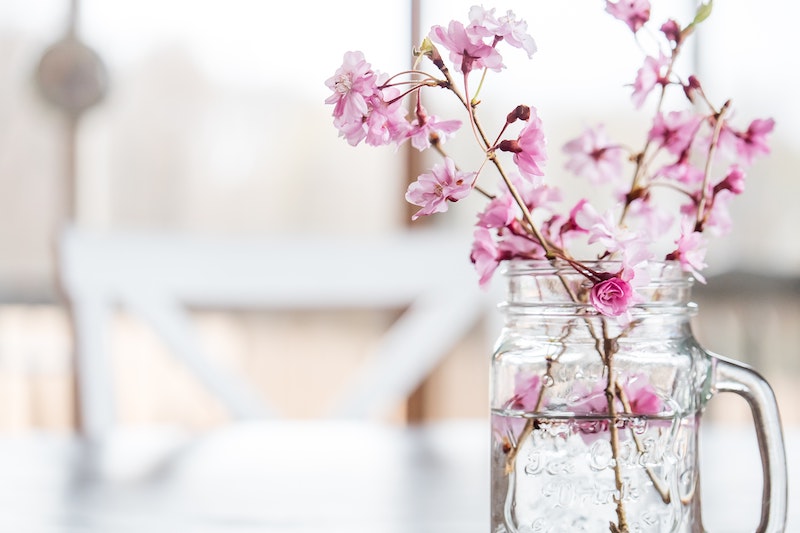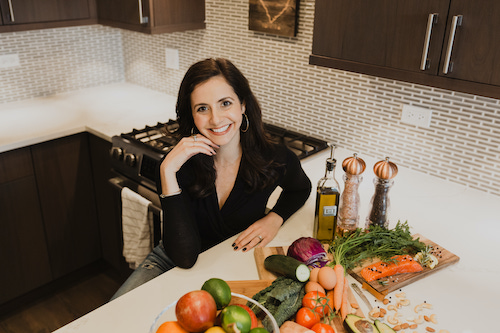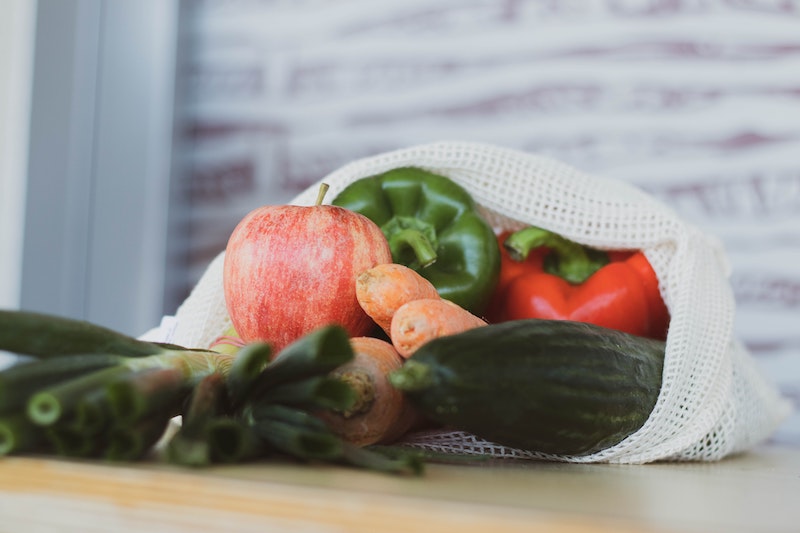
The days are getting shorter, the weather is cooling down here in Chicago, and the holiday season is officially right around the corner.
While this may be the most wonderful time of the year, you’ve probably noticed that the environment tends to take a hit during the holiday season. In fact, between Thanksgiving and New Year’s, Americans throw away 25% more trash—1 million extra tons of garbage per week—than any other time of year.
Does that mean you should be less celebratory? Of course not. There are ways you can celebrate while still cutting down on waste. To help you get started we asked some of the top sustainability experts for their best advice and they delivered. Here’s how to be more sustainable at home and reduce your environmental footprint this holiday season.
Deck the halls sustainably
Forgo buying any new decorations and trimmings that are non-biodegradable. These can include items such as synthetic ribbons, tinsel and foil wrappings, plastic ornaments, and artificial greenery. Use what you already have, and begin using more things that can go to the compost bin instead of the landfill. For example, use craft paper, cotton ribbon or hemp twine, burlap, and fresh foraged greens and berries (we love juniper, holly, or magnolia branches) to decorate your table, tree, and gifts. – Lady Farmer
Making use of what you have. If you need decorations, choose second-hand at your local thrift shops, online, or ask family and friends for any items they don’t use. Decorate the home with foraged plants from the garden or a forest walk, and compost them at home or through a local compost center. – Erin Rhoads, author of Waste Not: Make a big difference by throwing away less.
Fill your home with rosemary plants. They offer a seasonal scent while being “air purifiers” by taking in carbon dioxide and releasing oxygen. And, of course, use the herbs in plant-based, environmentally-friendly holiday cooking and beyond – think garlicky rosemary white bean soup, rosemary roasted root veggies, and cranberry-rosemary punch. – Jackie Newgent, RDN, culinary nutritionist and author of The Clean & Simple Diabetes Cookbook
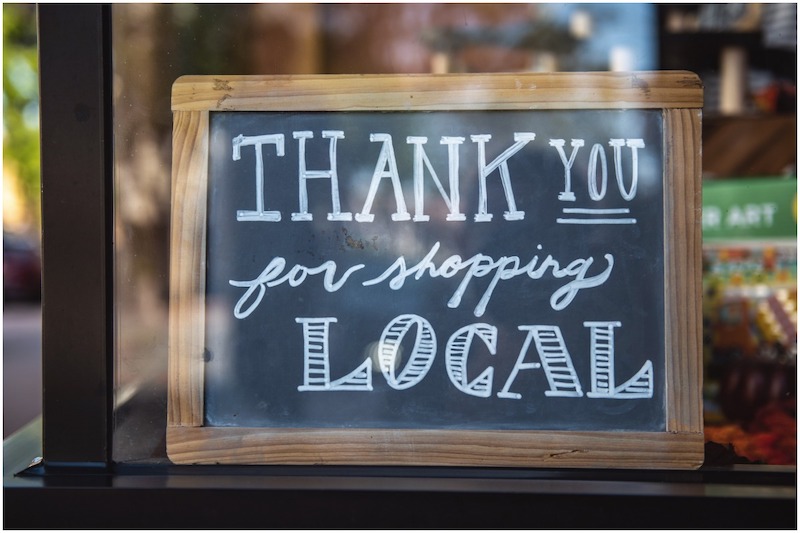
Go green with gifting
Purchase house plants or potted succulents for friends and family. These plant friends do double duty not only by bringing some of the natural world inside but they also remove pollutants from indoor air. My personal favorites are Boston Fern, Spider Plant, and Bamboo Palm. Remember, not all houseplants are pet-safe so be sure to double-check before you buy. – Green Willow Homestead
Give experiences instead of things. Unwanted gifts, plastic packaging, wrapping paper, and ribbons contribute an additional million tons of waste to our landfills each week during the holiday season. Most things eventually become trash, but memories last a lifetime. – Protea Zero Waste
Make your experience gift COVID-19 friendly. Since folks may have to spend the holidays away from their friends and family this year for health and safety purposes, we recommend they think outside the (gift) box by finding new ways to show their love. Experience gifts are a popular option for reducing your environmental footprint (because you’re buying less stuff) and can often be done within the safety of one’s own home (COVID-19-friendly). For example, send a hot-sauce making kit to your spice-loving sister, gift your mother a virtual bread-making class or sign your uncle up for a few months of a coffee of the month club. – Kale & Compass
Give a present that truly has meaning and will last. For example, something you made yourself or something that was made by a local artisan. Wrap your gift in reusable cloth, a tradition known in Japan as Furoshiki. The receiver can then use the gift wrapping again next time he or she gives a present to someone else. The circular economy at its best. – My Green Goodiebag
Do not buy useless stuff. Around the Holiday season, people tend to spend so much money on gifts and clothing. Overconsumption is horrible for our environment, as a lot of the items are made from plastic-derived materials and are used as single-use items. Do not buy a gift just for the sake of buying; if you aren’t sure what to get for someone, you can simply ask what they genuinely need or give them an experience gift (you can’t go wrong with those). – Almost Zero Waste
Give gifts from local community makers. Head to a craft fair, handmade market, vintage market, or any small shop and look for treasures as gifts. Try to find gifts that have minimal packaging, are sustainably made, eco-friendly, and/or practical for everyday use. Encourage sustainable living through gifting items that encourage low waste living. Handmade gifts are always special and you can package them very uniquely. – The Cool Hip Mom
Rethink holiday cards. One of my favorite simple ways to be more eco-friendly this holiday season is to send e-cards instead of mailing paper cards. Can you believe the USPS will plan to deliver over 15 billion pieces of mail this Holiday season? Almost 3 billion of those are holiday cards, which wastes enough paper to fill a 10-story tall football field. That is not only a lot of paper, it’s a lot of emissions added to our atmosphere. Rethink the way you send holiday cards by checking out some fun holiday e-cards here. – Kim Lewand Martin
Exchange local or homemade consumables. Create a new tradition by exchanging joy-inducing consumables such as local or homemade goods, beer, wine, etc., rather than gifts or gift cards. This not only supports local businesses and reduces environmental impacts, especially if you do not wrap these items and/or make them yourself, it also boosts holiday cheer while moving the focus away from material possessions. – Unconventional Sustainability
Re-gifting is not just for the white elephant holiday gift game. All of us own items that just no longer work in our home or our lifestyle. Instead of just donating it (which is the important step to take – don’t just toss it in the landfill), perhaps it would make a lovely holiday gift for someone you love. Bonus to include a story with it (how did you receive it and why) – sharing with the recipient why you thought of them and why you are passing it along to them. – Mrs. Green’s World
Be intentional with your holiday gifting. Skip expedited shipping, avoid Amazon, and instead give local consumables like wine, chocolate, or honey made in your community to your loved ones. Similarly, provide your family with a detailed list so you receive what you actually need or, if you don’t need anything, ask loved ones to make a donation to a charity of your choice in your name. – Mama Minimalist
Challenge yourself and give a homemade gift. Depending on the skills and time you have, you can knit cozy socks, bake delicious holiday treats, craft bouquets out of construction paper or old books, or make sweet hand-painted signs from recycled wood. Next, skip the wrapping paper and gift bag purchase and use stuff you already have at home: old newspapers, magazines, get creative, get your family and friends in on the fun, and remind them to recycle it all when you’re done. – Eco Roots
Use household items as gift wrapping this holiday season
Get creative with gift wrap alternatives. Magazines, newspapers, book pages, and tissue paper are great for small items. Use decorative boxes instead of gift bags or just use simple ribbon to tie items together. – Wonderfully Messy Mom
Embrace the Japanese art of Furoshiki, wrapping gifts in cloth instead of paper. Keep it simple with pillowcases, handkerchiefs, reusable bags, baby blankets, cut up old bedsheets, or T-shirts and for an added “wow” factor tie small pine boughs, pine cones, or holly to the gift with twine or ribbon. – Starting Sustainability
Use your yearly calendar as wrapping paper. My favorite way to be more eco-friendly during the holiday season is to re-use my monochrome Stendig Wall Art calendar as wrapping paper. 2020 will be the 4th year of this tradition, gifts are gorgeous and I get to re-use their beautiful paper one last time. I also love wrapping empty boxes in their calendar pages too, it really elevates my decor and is kid-friendly. – The Real Rebekah
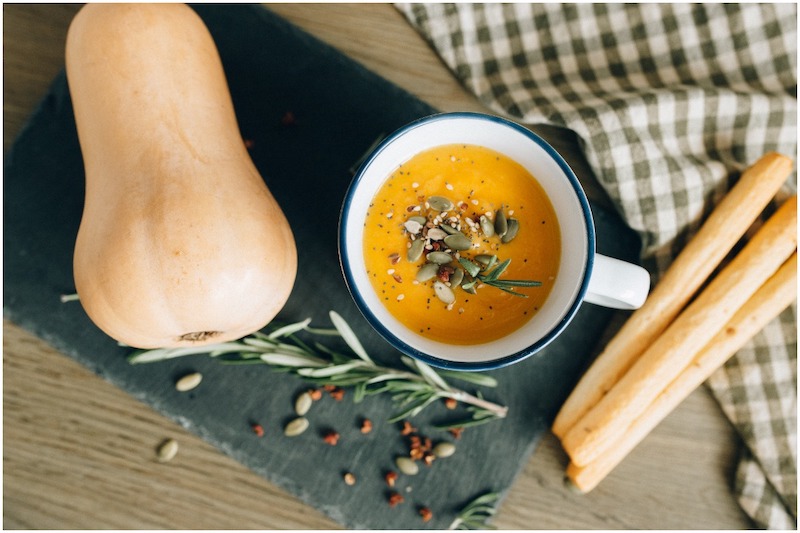
Utilize your kitchen to reduce your environmental footprint
Make one more meal per week plant-based. Embrace root vegetables and beans & lentils to make at least one more meal per week plant-based. Because root vegetables keep well and have often been grown locally, they don’t have the impact of transport nor being greenhouse-grown. Beans and lentils are a great alternative to animal proteins — and replacing even one meat-based meal a week with a plant-based one has been shown to be one of the best ways to reduce your carbon footprint. – The Apothecary
Opt for organic and sustainably sourced ingredients and foods. The holidays wouldn’t be the same without plenty of tasty comfort food shared with friends and loved ones. Have a healthy, delicious, and eco holiday season this year by loading up your shopping basket with organic and sustainably sourced ingredients and foods. It’s one of the best gifts you can give both your body and the Earth. – Windy City Organics, RawGuru
Focus on a waste-free kitchen this holiday season. Use natural elements like fruit, pinecones, and greenery for table décor, and bring out the reusable plates, silverware, and napkins. Cook simple and delicious whole foods, have a plan for leftovers and scraps, then compost what’s left. Bonus points if you incorporate plant-based sides and entrees for an even more eco-friendly holiday feast. – No Waste Nutrition
Save your vegetable scraps. You can use them to make a savory, homemade broth for soups, sauces, and stuffing. Bits of onion, carrot, celery, leek, and garlic all work well, but also try mushrooms, tomatoes, and corn cobs. It's a great way to repurpose vegetable trimmings and reduce food waste, and you get a different (and delicious) flavor each time. - Wild Minimalist
Save leftovers. Let your imagination turn them into new fun dishes (or search on Pinterest). Give guests the leftovers in mason jars. If you’re serving a turkey, save the carcass of the turkey breast and use it as a base for making broth the next day, either on the stove or by using a slow cooker. – The Zero Waste Family
Reduce food waste. Every year, 40% of food in the US ends up in landfills. Reducing food waste is a great way to lower your environmental footprint, especially during the cooking-heavy holiday season. From making stock out of veggie scraps to turning fading fruit into jam and baked goods (gift idea, anyone?), small changes in the kitchen can make a big difference in keeping perfectly good fruits and veggies from getting tossed. – Hungry Harvest
Use pasta water to water your plants. You may be cooking up some pasta this holiday season. If so, the water you use to cook your pasta can be used to water your plants and flowers and will help you save water. After cooking the pasta, the water is full of starch which is rich in minerals and vitamins. Your plants will love it. Just make sure that the water is not salted, and has cooled down before. – Easy Eco Tips
Make simple eco-friendly changes around your home
Lower your thermostat and cozy up with a Christmas sweater. Lowering your thermostat by one degree is said to save about 3% on your energy bill (and carbon emissions). Pull out some cozy blankets to layer on the couch the next time you watch TV. – The Sustainable Stylist
Replace common household items with reusable alternatives. We love investing in refillable fountain pens, water bottles with personality, reusable coffee filters, cloth produce bags, glass straws, and elegant storage containers. These easy, sustainable changes are an opportunity to invest in items that last a lifetime, and they make great gifts too. – Prep To Your Door
Create a zero-waste laundry routine. The holidays bring more gatherings and hosting which in turn means more laundry. An easy eco-friendly switch we recommend to your home is creating a zero waste laundry routine by using our eco dryer balls and zero waste laundry strips. Our eco dryer balls reduce drying time and eliminate the need for clothing softener while our zero waste laundry strips replace plastic detergent jugs and clean wonderfully. – Hands Producing Hope
Say goodbye to single-use plastic saran wrap. This beeswax wrap is one of the three easiest swaps to make and it is so versatile. This beeswax-coated canvas forms, molds, and covers just about anything. We use it to cover bowls of leftovers, to wrap around awkwardly-shaped chunks of cheese, to carry around snacks-to-go…it’s limitless! I had this item in my cart for so long before I finally bought it. My only regret—I wish I was using this sooner. Sustainable, so easy, and so versatile – The Foundation Blog
Use eco-conscious foodware. During the holiday season, there is a lot of single-use foodware that piles up. We recommend using as many reusable tableware items but if that isn’t possible, Karmic Seed’s fallen palm leaf plates and bowls are one of the best and most eco-conscious options available. They are made from fallen leaves so no trees are harmed, and once you are done using them they can be tossed into your compost. They are great for our soil, unlike plastic and Styrofoam. The best part is they look very eco-chic for all gatherings. – Karmic Seed
Invest in more sustainable and long-lasting products. While these often carry a higher price tag, their multifunctionality and renewability will actually save you money over time. For example, at holiday gatherings you can swap plastic utensils for your own Bambu reusables, wrap your gifts in a tea cloth or scarf from Tilonia, and when you’re apple-picking for that delicious pie – bring a Frusack compostable produce bag instead of opting for plastic. – Toasting Good
Make your own shampoo and conditioner. Instead of buying bottle after bottle of shampoo and conditioner for your home, start making your own. It’s as easy as baking a cake and reduces the amount of plastic you’ll use throughout the year. Shampoo bars make great gifts as well. – Simple Life Mom
Originally published by Redfin
